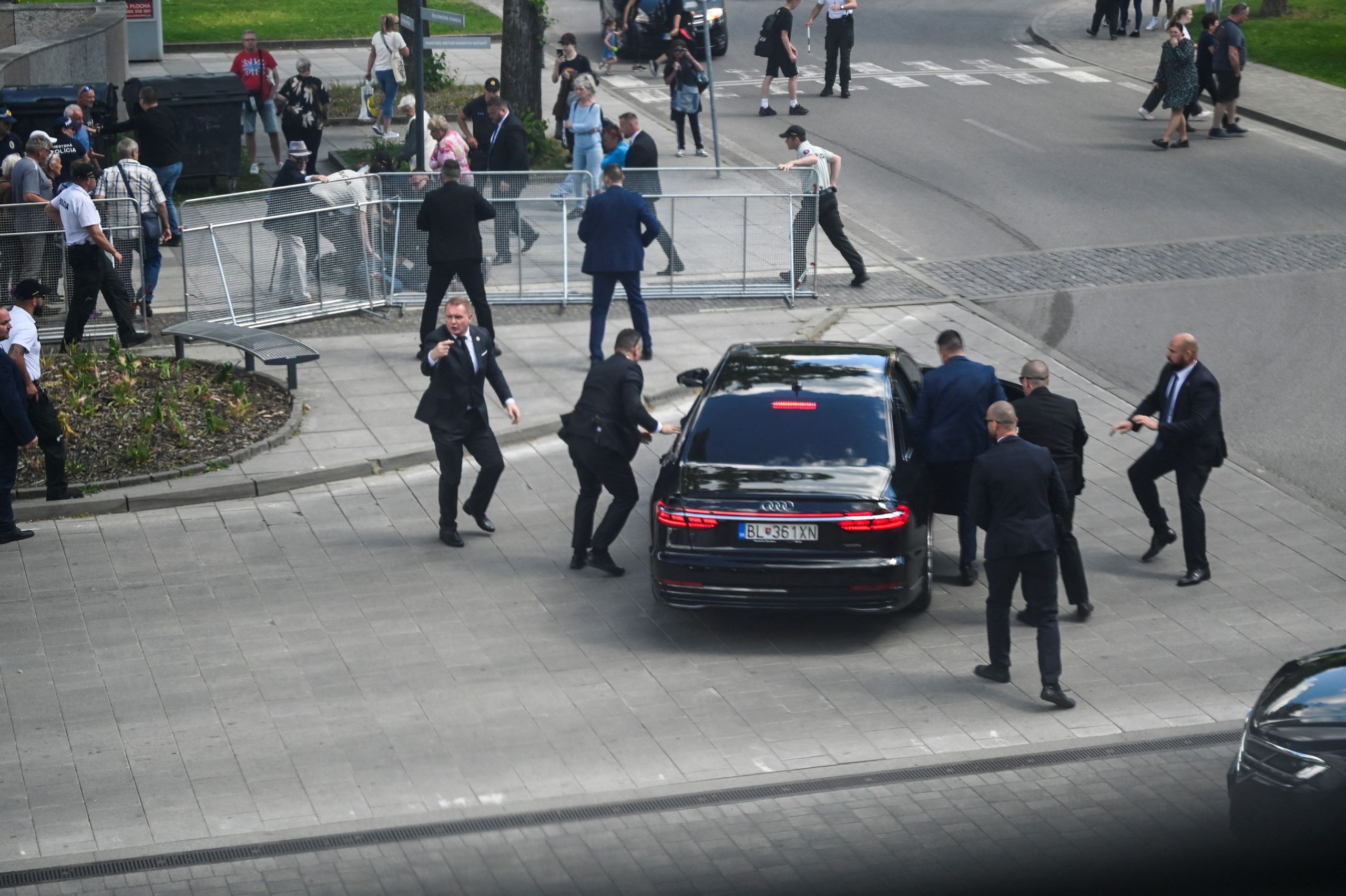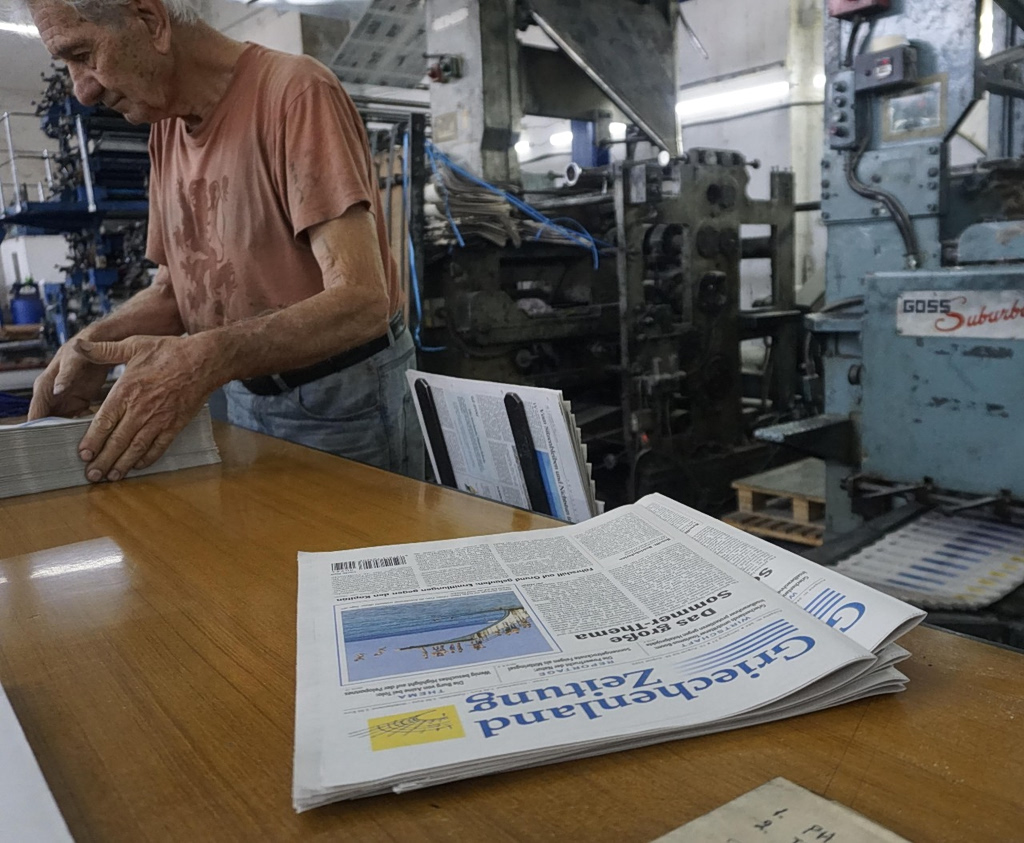The assassination attempt on Slovakia’s leader has thrown a light on the growing polarization in European politics, where vicious fighting between populist politicians and their staunchest critics has been exacerbated by the war dragging on to the east in Ukraine.
Slovak police charged the suspect in the shooting of the country’s prime minister with attempted murder on Thursday, in what the government of the central European country said was a politically motivated “lone wolf” attack by a 71-year old man. Slovak Prime Minister Robert Fico remained in a stable but very serious condition in the hospital, authorities said.
Fico assured his return to power last year, after a five year hiatus, by exploiting rifts in Slovak society caused by the Ukraine war and increasing migration. Since then, he has railed against European Union policies on both issues while adopting an increasingly anti-U.S. and pro-Russian tone.
His efforts to embrace voters on the edges of political debate by staking out territory against Brussels and sometimes Washington are part of a broader push among a growing host of nationalist and populist-minded politicians, from Hungary to the Netherlands , who seek to aggressively exploit the impacts of Europe’s decade of perma-crisis—from the financial and migration crises of the 2000s and 2010s on through Covid and the Ukraine war.
“Fico is not alone in viciously driving the conversation to the extreme left or right,” said Milan Nic, senior fellow at the German Council on Foreign Relations. “They’re doing it because it works.”
The attack on Fico brought outrage and condemnation from around the world, from President Biden to Russian President Vladimir Putin , in a year in which several momentous elections await. Ahead of European parliamentary elections next month, in which right-wing parties are expected to boost their standing, rhetoric on the continent has become particularly sharp.
In Hungary, where that vote coincides with local elections, Prime Minister Viktor Orban has been working to mobilize his Fidesz party’s base. The streets of Budapest currently are lined with billboards depicting his political opponents as photoshopped butlers of the U.S. and the EU, bringing policies of war and migration to the central European country.
Divisions elsewhere also have led to violence. A leading German socialist candidate, Matthias Ecke, was assaulted while putting up campaign posters in Dresden earlier this month, an attack that is currently being investigated.
“Unfortunately, these attacks are not new,” said the regional Interior Minister Armin Schuster following the attack. “What is absolutely worrying is the intensity with which the attacks are currently increasing.”
The growing threats in Slovakia, against the background of an increasingly charged political landscape, have alarmed politicians and analysts.
Outgoing Slovak President Zuzana Caputova declined to run again in this year’s presidential election after receiving death threats. After Fico threw repeated barbs at her, calling her a puppet of the U.S., she filed a lawsuit against him, saying she had been the target of “public bullying and unjustified accusations.”
Nic said the opposition stepped up their rhetoric as well, leading to an unprecedented level of hostility in the country. “We’re seeing a level of hatred introduced in politics around the world, but the various factors involved in the Slovak case have acted only as catalysts,” he said.
Since the attack on Fico, Caputova has condemned the violence and wished him a speedy recovery while Slovak politicians have appealed for calm on both sides.
At a press conference on Thursday, Slovak Interior Minister Matus Sutaj Estok said the suspect had antigovernment views and had attended opposition rallies.
During questioning, he said, the suspect opposed a number of policies taken by Fico, including his threats to stop aid to Ukraine and a move to dissolve a special prosecutor’s office to investigate corruption. Estok said the man had decided to carry out the attack shortly after the presidential election in which Fico’s close ally and like-minded nationalist-populist leader Peter Pellegrini won the contest to replace Caputova when her term ends next month.
A social democrat who emerged in the 1990s, Fico veered sharply to the right after Europe’s 2015 migration crisis to join Orban in staking out an increasingly pro-Russian foreign policy position in the EU and North Atlantic Treaty Organization. Fico resigned in 2018, before his third term finished, following massive protests sparked by the killing of a Slovak reporter who had been covering corruption allegations, Ján Kuciak , 27, and his fiancée in their home.
Unlike Orban, Fico has managed to avoid outright conflict with the EU or the U.S., quietly supporting consensus positions within the EU or NATO on some issues, and vocally opposing the Western establishment on others.
The growing polarization in the almost dozen former Warsaw Pact countries that joined the EU since 2004 is a reversal from earlier decades.
During their earlier years in the bloc, the process of applying for membership helped forge a political consensus around broadly liberal, free-market politics. To join, countries had to meet EU requirements such as establishing an independent judiciary and building adequate political institutions following rule-of-law.
Political violence was largely absent from EU, in contrast to non-EU nations such as Russia, where the Kremlin’s political opponents began to be targeted, or Serbia, where pro-West Prime Minister Zoran Djindjic was gunned down in the street in a killing linked to the Serbian mafia.
But over the past decade, the broad consensus in the region has started to fade as politics also became more factional and bitter in many older democracies in Western Europe and the U.S.
A powerful trigger for discord came with the migration crisis of 2015, when the arrival of more than a million asylum seekers, followed by a series of ISIS terrorist attacks across Europe, produced divisions among capitals in Europe and even sharper ones within certain countries.
For leaders such as Hungary’s Orban, the migration influx became the leading charge against what he depicted as a liberal, out of touch EU elite, unwilling to safeguard the continent’s borders and well-being. His views were echoed by growing hard-right forces elsewhere, with the likes of Marine Le Pen , the Netherlands’ Geert Wilders and the Lega Nord’s Matteo Salvini in Italy gaining popular support for their hard-line antimigrant message.
The election wins of the nationalist conservative PIS party in Poland in 2015 and 2016 also gave Orban a powerful ally within the bloc.
There is little evidence that the new, acrimonious atmosphere is pulling political debate away from parliaments and legislatures. The assassination attempt on Slovakia’s prime minister drew condemnation across the continent from across the political spectrum. There was shock in many capitals, partly because events like these have been so few in number in recent decades.
However, Peter Kellner , a visiting scholar at the Carnegie Europe think tank and a former president of the U.K. YouGov polling firm, said Europe has seen in recent years that a bitterly divisive political environment can trigger individual acts of violence.
In June 2016, days before Britain voted whether to leave the EU, Labour lawmaker Jo Cox, a strong pro-EU advocate, was killed by a white supremacist extremist who had no significant ties with the Brexit campaign.
“While I don’t think you could blame people with strong political views for inciting it, it must be the case that when there is extremist language then some people will do really, really awful things,” Kellner said.
Write to Thomas Grove at thomas.grove@wsj.com and Laurence Norman at laurence.norman@wsj.com



